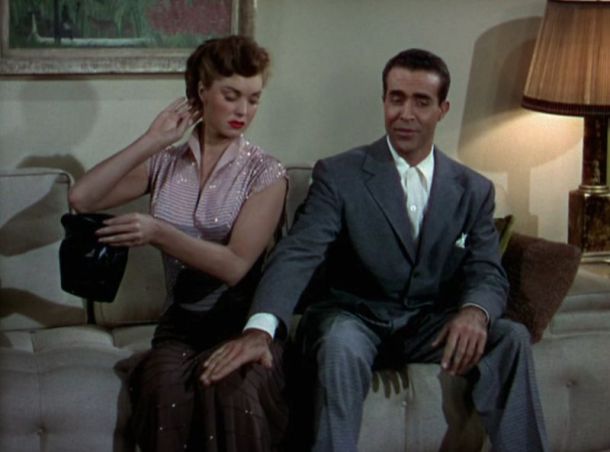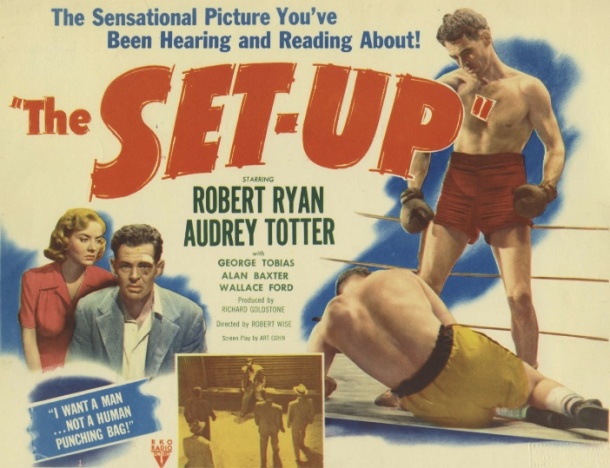
Colorado Territory (1949)
Directed by Raoul Walsh
Warner Bros.
Most plot summaries of Raoul Walsh’s western Colorado Territory mention that it’s a remake of the great Warner Bros. gangster movie High Sierra (1941), but that fact is curiously absent from the opening credits.
The screenplay is credited to John Twist and Edmund H. North, but there’s no mention of W.R. Burnett, who wrote the novel High Sierra, and there’s no mention of the earlier film.
This is strange, since the change of setting from the modern day to the Old West could almost qualify this as a “variation on a theme” rather than a straight remake, but there are so many scenes and characters that are nearly identical to scenes and characters in High Sierra.
I recently wrote a piece on producer Mark Hellinger for the annual “giant” issue of The Dark Pages, which was devoted this year to The Killers (1946). (You can order copies of The Dark Pages and subscribe here: http://www.allthatnoir.com/newsletter.htm).
Hellinger frequently worked with director Raoul Walsh at Warner Bros., so I went back and watched a bunch of their collaborations — The Roaring Twenties (1939), They Drive by Night (1940), and High Sierra (1941). (I still haven’t seen The Horn Blows at Midnight, though. Jack Benny made a running joke of it on his radio show, but it can’t be that bad, can it?)
Walsh was a great director who made unabashedly commercial films with a great sense of scope and memorable characters.
Colorado Territory isn’t ever listed among Walsh’s greatest achievements, but it’s a damned fine western that I think would be better regarded if it didn’t have such a generic title. If one were to scan through a list of westerns from 1949, Colorado Territory screams “B picture.” With a title like that, it easily could have been an RKO Radio Pictures western starring Tim Holt or a Republic Pictures western starring Roy Rogers (not that there’s anything wrong with that).
Joel McCrea plays Wes McQueen, an outlaw who escapes from jail and is on the run for most of the movie. (This is essentially the same as Roy Earle, the role Humphrey Bogart played in High Sierra, except that Earle was released from prison.) He hooks up with a couple of vicious characters who aren’t as smart as they think they are — Reno Blake (John Archer) and Duke Harris (James Mitchell) — and together they plan a daring train heist. (These two criminals were played in High Sierra by Arthur Kennedy and Alan Curtis.)
There’s also a beautiful woman to makes things complicated. Her name is Colorado Carson (Virginia Mayo), and she wears lots of flowing low-cut tops and Southwestern-style jewelry because she’s supposed to be part Pueblo. (This is essentially the character Ida Lupino played in High Sierra, although her fashion sense in that film was a lot more conservative.)
And of course, just like High Sierra, there’s a criminal mastermind behind the scenes of the heist and a sweet, innocent-seeming girl whom our criminal protagonist idolizes for a little while before coming to his senses and realizing that he belongs with a straight-up ride or die chick.
There is, however, no cute little stray dog or “comical Negro” character. (You take the bad with the good.)
In Walsh’s filmography, High Sierra will forever be regarded as the superior film. And in 1949, Walsh also directed his masterpiece White Heat, so Colorado Territory suffers by comparison in that department too. (Virginia Mayo is also in White Heat, and her role in that film is a lot meaner and juicier.)
One of the problems with remakes is that no matter how good they are, it’s nearly impossible to lose yourself in them if you’ve seen the original film, since they constantly evoke it. I like Joel McCrea and think he’s a great actor, especially in westerns. But he lacks the nastiness and cynicism Bogart had in High Sierra, which made his more human side stand out in such sharp relief.
On the other hand, when a remake differs from its source material, it can make certain scenes even more shocking and emotionally affecting than they would be on their own, since you’re really not expecting things to go down that way. Colorado Territory has a few bits like that, and it’s exciting and well-made enough to stand on its own.














